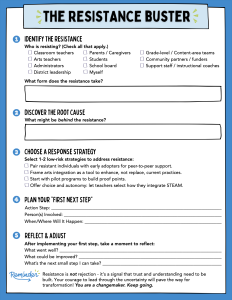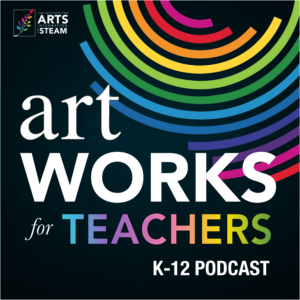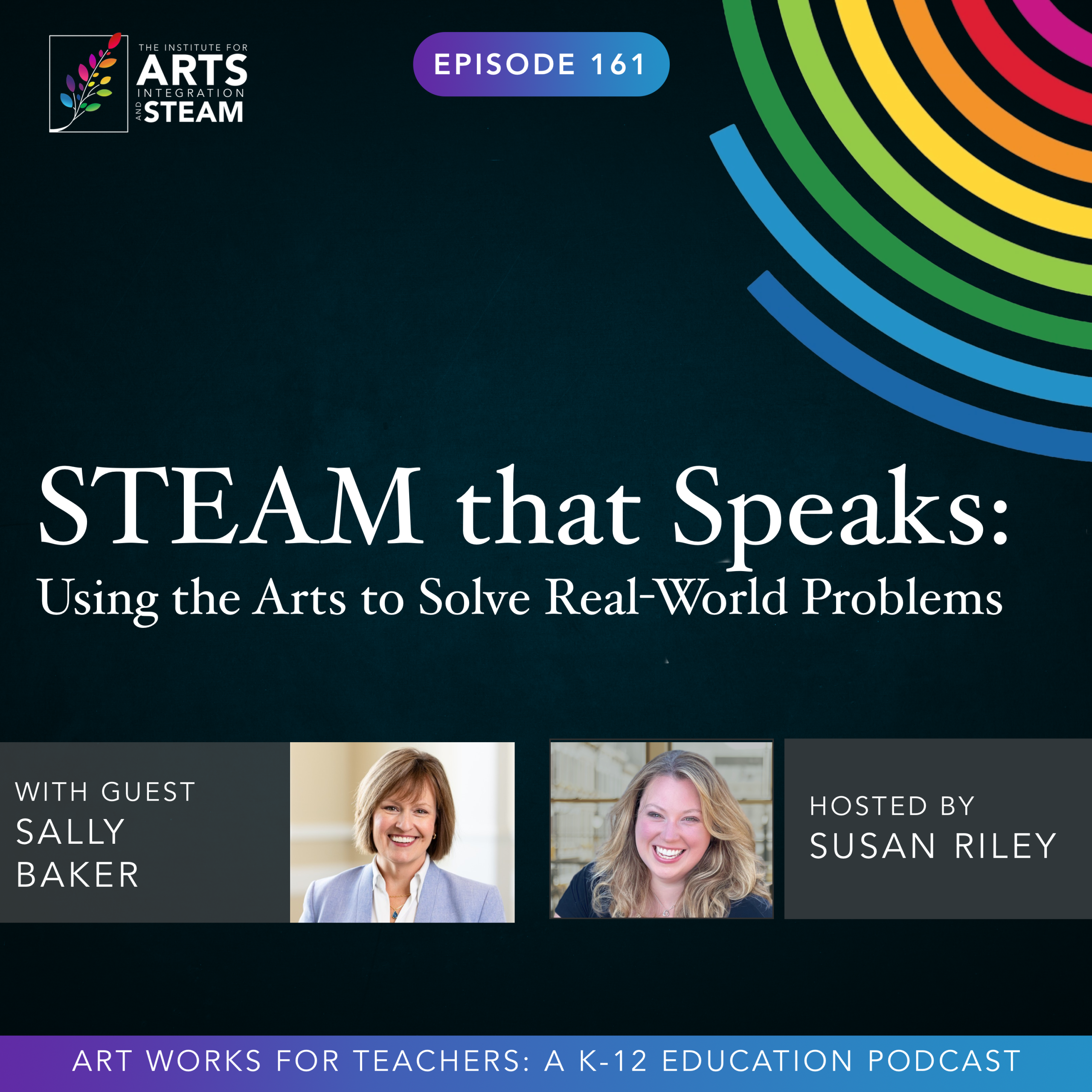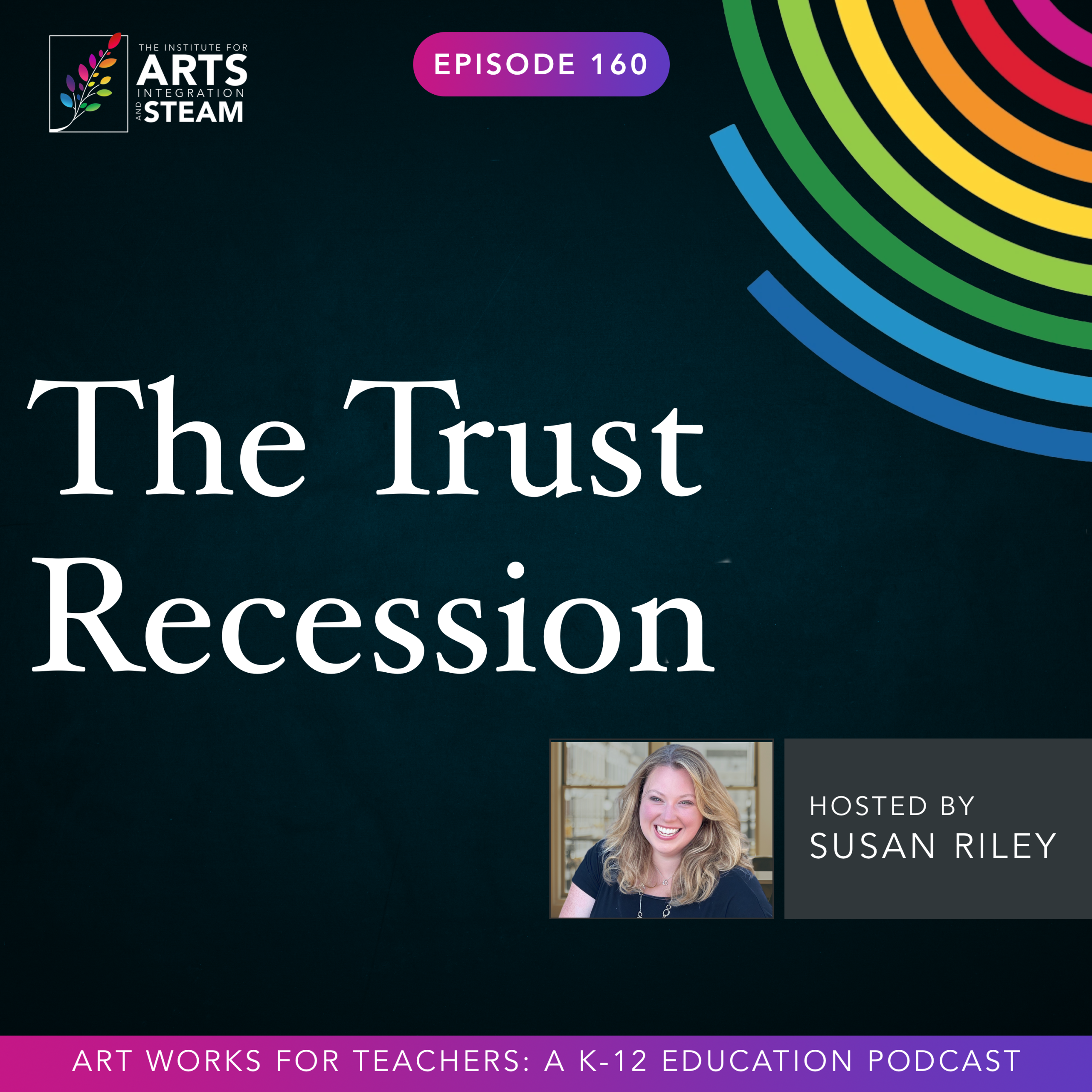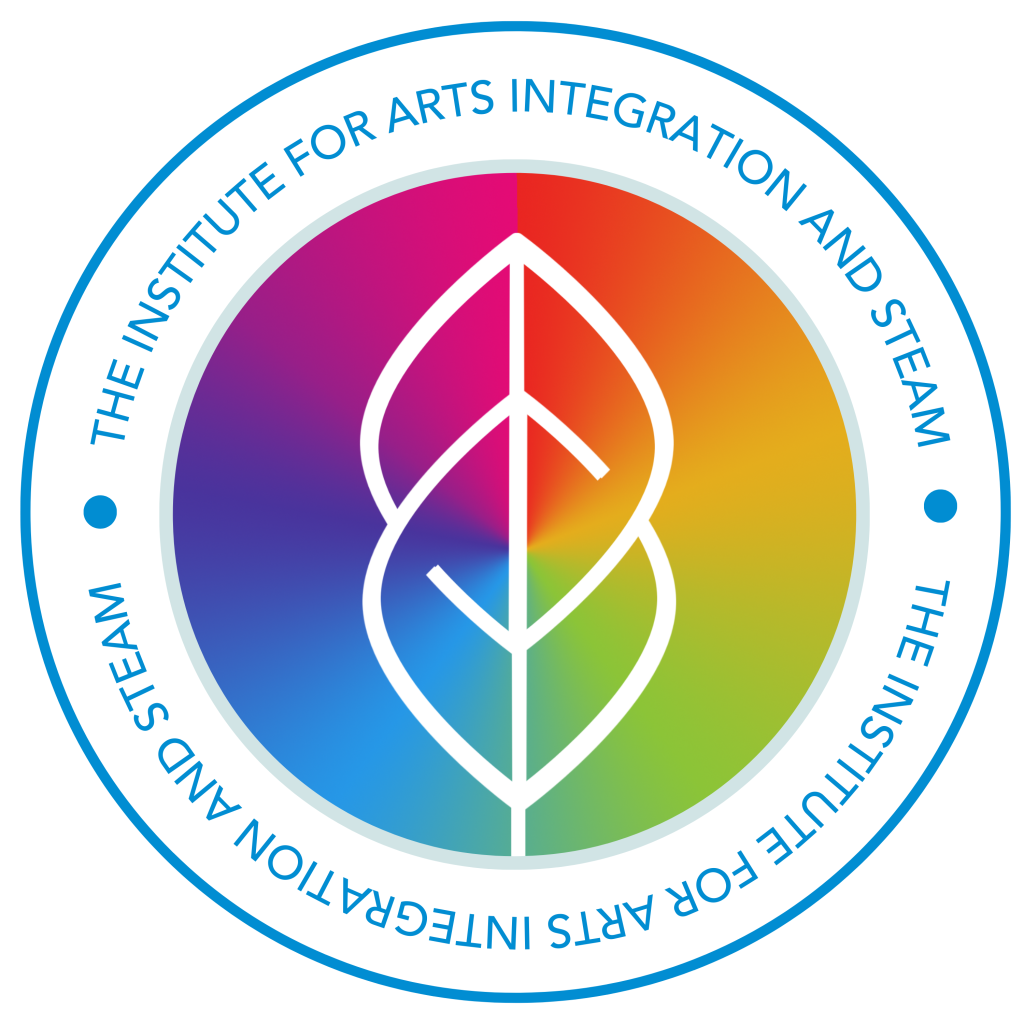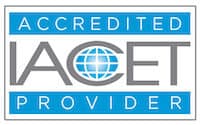ART WORKS FOR TEACHERS PODCAST | EPISODE 133 | 33:45 MIN
Beyond the Eyeroll: Overcoming Resistance
Enjoy this free download of the Resistance Buster resource.
Well, hello friend and welcome back to another episode of Artworks for Teachers. I'm your host, Susan Riley. And today we're gonna be talking all about resistance. Not resistance like you are resisting something that is horrible, but the idea that sometimes resistance happens when we're introducing arts integration, STEAM, or really any new initiative or work that is outside of our comfort zone. Now, personally for me, I run up against resistance whenever there's something that I just clearly either A, don't want to do or B, feels like it's outside of the realm of where I'm either comfortable or things that might push me beyond what I'm good at. I think that happens a lot.
But I was actually rethinking resistance a little bit with a recent diagnosis that I've had. working with my doctors, it's been very, very clear to me, especially in my 40s now, that I have some insulin resistance. And doctors and I have been trying to figure out what's the best way to go about trying to regulate this for me, right? And I've tried a ton of things.
I've tried the ever popular weight loss drugs that are out there right now promising that that will help. They actually did it. I've tried metformin. I've tried lots of chemical things that doctors have put us on. And quite honestly, the best things that have actually helped my resistance are things like walking after a meal, after 20 minutes after I eat, going for another 20 minute walk. That really helps with my insulin resistance by eating more protein, eating less carbohydrates, but not no carbohydrates. Like there was a time in my 20s when I did Zippo carbs, right? That like they were evil. And what I've actually found is that good carbohydrates, things that are whole grains, that are good carriers of protein and the vitamins and minerals that I need actually help with my insulin resistance as long as I'm not overdoing it, right? So being mindful of that, drinking a lot of water, way more water than I ever imagined that my body would need, I have found that the more water I drink, the lower my insulin resistance. So playing around with some natural alternatives to the prescription heavy norms that are out there actually benefited me more.
And I've, you know, I'm kind of on this journey now of figuring out what makes me feel good, what ensures that my insulin levels are where they need to be, and how do I do that as naturally as possible? And as I've been thinking about this idea of insulin resistance and how it applies to resistance that we all kind of get when we're working in new systems or new ideas something striking really started to bubble to the surface for me. And that is that we oftentimes try to prescribe away resistance, like it's a bad thing. What I've learned in the last year or so of kind of battling this insulin resistance of my own is that sometimes that's okay. And for some people that works, right? Some people can take the meds and that works and some people the prescriptions are a good thing and I'm not saying that they're not. For some people that works, but for some people, myself included, being able to make modifications, small tweaks, and understanding how that benefits me without having to wish it away, but really using that resistance as an indicator of there's a problem here or there's something that you should check into more deeply. And let's look at that, break it down and figure it out together. You know, me, my practitioner and my nutritionist trying to figure all that out together has been a much more pleasant experience and it's actually been more effective. When I say this, think I, you know, we're thinking of our health, but if we tie this to what we try to do in our classrooms,
When we're trying to bring in something that excites us, right? Like we're excited about using arts integration. We're excited about more creativity in our classrooms. And we see that potential. And then we get hit with resistance from others. I often think that we want a checklist of here's how I prescribe this away. Here's how I tamp down that resistance, because I don't want to see it.
I don't want to deal with it. It hurts. It's like something's coming at me and I don't quite know how to deal with it. So I just want to push it away, right? Rather than dealing with resistance that way, which is how I think many of us deal with resistance. And I think it's how many of us have been dealt if we have resisted things in the past. Rather than doing that, I think a better approach might actually be to get curious about what's causing the resistance looking at it more holistically together as a community and then determining what actually small steps we could do that feel good and that have a bigger effect and impact on what we're all trying to achieve, which is getting students to achieve their very best, whatever that looks like. Right? So in today's episode, that's the approach we're going to take when we go to think about overcoming resistance. Okay. So let's get started.
So the first thing we want to think about is why does resistance exist? And here's a hint. It's not just because people are stubborn. It's actually a survival tactic and habit. When we're thrown something new, change comes at us. Our first instinct, it's our survival instinct, is to push back or to resist the change because we've
We survived up until this point without having to change and change oftentimes means the old dies and the new begins. And if we're part of the old, we don't want to die. So it's a survival instinct for us. It's natural. It's a habit that we often find ourselves getting into is no, no, no, no, no, I've got too much on my plate. I don't I don't want to think about that one more. Right. Unless it's something that we have actively sought after ourselves anything new that comes along to us, we're automatically wired to resist it. So that's important to remember. It's not personal if somebody resists something new that you're sharing. And it's not personal if you want to implement more creative curricula into your classroom, right? And nobody else does. It's not personal. It feels personal, but it's not. That's just their survival instinct kicking in.
So when you know that, it takes that sting out, right? It also is important that we recognize that this matters now more than ever, right? It matters that we approach resistance with curiosity and trying to figure out how can we overcome this resistance together? Because creativity is becoming a competitive advantage. So we need our colleagues to get on board with this.
Because it's not just for our good and it's not just because we like it. It's because this is the thing. Creativity is the thing. It is the edge that is going to set our students up for success in a world we can't see yet. Right? In this rapidly changing AI crazed world that we're in, creativity is the competitive advantage. And so if we are going to set our students up for long term success, we must
We must be using creativity in our classrooms, using it, embracing it, sharing how to teach it, how to teach with it, and how our students can build in their skill sets inside of it. These are all things that we need to be doing. And so it's expected that people are going to resist us. Just know that going in, remember, it's a survival instinct. But be prepared to overcome that resistance with some of the techniques that I'm going to share with you today because it is so important that we do it. Okay, it's no longer an option. We need to be overcoming this resistance. Resistance, I'm going show you how. So remember, resistance, I'm going to say this a lot, resistance is survival, right? It's a psychological comfort zone. So teachers will often cling to what they know and what they know works under testing and accountability pressures. That's just a reality. We know that we're gonna be graded ourselves as teachers based on what our students accomplished on that test. We're gonna be seen as either a highly effective teacher, an effective teacher, or a non-effective teacher based on the results that students get on their standardized testing. We know that. That is a reality that we're facing.
And so if we all acknowledge that, and we acknowledge that creativity currently is not one of those standardized tests, right? That makes a lot of sense then why teachers would resist taking the time that it takes to teach creative skills, right? We can understand that. There's also systemic pressures and barriers that we all face. There's budgets that are tight and who has time, budget, money, or the ability to pay for creative curricula, creative tools that you can use in your classroom, materials, maker spaces, all the things that get lumped into creative endeavors sound expensive, right? So budgets are tight and so it's an immediate, nope, we don't have money for that. Or there's the one more thing syndrome that goes on.
Right? It's, ugh, you're asking me to integrate the arts into my curricula. First of all, we don't have the money for it. Now, that's one more thing that I have to be responsible for when I don't know how to do that. See what I'm saying? These are all typical reasons that we hear around resisting arts integration, STEAM, project-based learning, anything like that. Something else that is a typical reason why there would be resistance are misunderstanding about arts integration, right? It's just arts and crafts. Or this is gonna be used in place of our arts teachers, which by the way, let me say this again for the thousandth time, arts integration and STEAM do not replace arts teachers. They make arts teachers the MVP's most valuable players of your school. because you have to teach the arts skills directly to students in order for them to apply them in arts integration or STEAM. So in order for you to have an authentic program with arts integration and STEAM embedded in it, you have to have dedicated arts time taught by dedicated arts teachers. Right? So when we have these misunderstandings, and I can't tell you how often this comes up, that arts teachers are so scared that arts integration and STEAM is being used to replace them because there are misunderstandings at the leadership level as to what arts integration is and is not. I understand the resistance that comes from arts teachers. I understand the resistance from classroom teachers when they say we don't have enough time and we don't have budget for this and this is one more thing on my plate. I definitely get that, right?
All that said, we have to understand that even though those are realities for some people, it's not the reality for all people. Because if it were, then Arts Integration and STEAM wouldn't happen at all. But I can tell you, I have hundreds of stories, thousands probably at this point, of teachers who are using Arts Integration and STEAM actively right now, doing it day after day. It's the way that they teach and their students are seeing incredible results over and over and over. Our accelerator members tell us this all the time. certification people tell us this all the time. So if it didn't work, if it actually cost too much, if it actually was one more thing on the plate, if it actually did replace all arts teachers, then the success that we see and the people who are using it wouldn't exist.
Right? So understanding that it's reality for some people right now doesn't mean that it's the only reality that exists. This is a key piece when we're working in resistance with other people. Oftentimes we get stuck in our own perspective and being able to get them to see a different perspective and see this is how it could be because others are doing this. That's a huge shift for people. That's when things really start to turn around.
So understand this background at the beginning as you're dealing with resistance. Know that it's not personal, that it's survival, and that just because it's your reality doesn't mean it's the own reality. These two pieces here are going to help you as you work towards overcoming that resistance overall. So what's really behind this kind of pushback? Well, first, there's the fear of change and the fear of failure.
And I think this is so important. talked about this on a previous podcast episode just a couple of weeks ago, this whole idea around failure and that we don't want our students to fail and we don't want to, you know, we avoid failure at all costs, but failure is the greatest teacher. It is the thing that we remember most so that we don't repeat it. So it is still a very present fear with us, right? Fear of change is definitely there, but also fear of failure.
I think administrators often account for the fear of change, but they forget the fear of failure. Because none of us wants to look dumb. None of us wants to look like we tried something and it flopped. That's not a great look. So it's something important that we keep in mind here, that those two fears are very important and very top of mind when people are resisting using arts integration or STEAM or project-based learning. Also,
There's a perceived lack of training or expertise. There's this idea that I have to be an artistic person in order to use arts integration or STEAM, or I have to be good at art, or I have to be good at music, or in some way be, just have a natural talent that I'm willing to share with others in order to use this. And that couldn't be further from the truth. There are even the easiest ways to get started. I know we've talked about this on the podcast before. A simple thing as simple as a see, think, wonder where you look at a piece of artwork and you jot down what are the things that you see, what are the things that you think, and what are the things that you're curious about, the questions that you have, what are your wonderings? Write them down into three columns. That's the beginning of arts integration and you didn't have to draw a single thing other than you know, two lines and a horizontal line across for a chart. That's it, right? So you don't have to be an expert in order to use these things, but there is this perceived idea that you have to be an artist in some way. And some of that comes from the title, right? Arts integration. And also it's the first thing that comes to mind as a, survival instinct. If I have to pick something to push back, it's going to be that I'm not an artist. I can't do that. Right?
What I want to say though about these, what's behind this pushback, right? What's behind this resistance is that resistance often masks interest. It's a hidden opportunity, right? If people are resisting something, especially if they're resisting it hard, like they are your arch nemesis and they're like, no, I don't want any parts of this. Usually resistance actually is masking interest.
It's easier to resist than to risk trying and failing. So it's not that they don't want to. Resistance is often not about not wanting to do something, not desiring it. It's actually about the opposite. They want to do it, but they're afraid of failing and they're afraid of the work and the change that it's going to take or what they perceive as needed.
They're afraid of those things and it's easier to just resist and push back than it is to try something new. So keep that in mind when you're working with folks. When you're trying to dig in, what's the real reason here? What am I really digging into? Is it fear of failure? Is it fear of change? Is it a fear that they don't have the expertise that they need? Is there interest there?
If so, how can I cultivate that interest a little bit? And that's where we're going next. So when you're thinking about overcoming resistance, here are five practical strategies that I want you to keep in mind. So the first thing I want you to think about is normalize it, right? Remind those you're working with that change is hard and that's normal. Resistance is normal, right?
I'm reminded every once in a while of a Star Trek phrase from, yes, Star Trek Next Generation. I'm a Trekkie, who would have known, right? But there's this whole scene around the captain of the Enterprise gets taken by the Borg. And their key phrase is, resistance is futile. And I kind of want to put that and wrap it around arts integration and creativity, this idea that resistance is futile. You can try to resist it,
But the more you try, the more you're gonna wanna get in it, and the more you're gonna see that it does amazing things, and it's futile because you're gonna just jump on this train eventually, right? I like to keep that in my mind when I come across resistance. That, you know, they're gonna come on board, but you first have to normalize it. You have to normalize it and empathize with it. You have to understand not just give it lip service. You can't just say this is normal, but not believe that. You have to actually believe it because it's true. It is normal for people to be afraid of failure. It is normal for people to be afraid of change. That is normal and you should remember times when you yourself were afraid of those things. Empathize with people, normalize it. Second, start small, right? So use low risk strategies first. We talk about this all the time. It's one of the reasons that we have a strategies newsletter that goes out every Tuesday because one little strategy could be your gateway into opening up creativity across your curriculum. Just one, right? So you could start with that see, think, wonder chart. Another great one that I love is headlines.
So if you are looking at a piece of artwork or if you're listening to a piece of music, how would you headline that? If you were gonna put a headline that was six words or less in a newspaper or on a magazine or in a social media post, how would you headline that piece? What would capture, what would come to the surface? How would you title it? That's an easy way in to looking at arts integration, right?
Using very small strategies that take no more than five minutes of your time, that could be used as a bell ringer or as a way to transition to the end of class. It doesn't have to take up a ton of instructional time. And yet, those will often be the things that students remember most and that they get so excited about. And it engages them and turns their brains on for the rest of class.
And when teachers see that, they get excited, right? They're like, these strategies are working. And again, that's your gateway in. So rather than starting with a whole arts integration lesson or a unit, my gosh, when I started, I tried to start with a nine week unit. I have no idea what I was thinking. That was terrible. mean, talk about using tons of time and people being like, no, pushback resistance.
Instead being able to use a small strategy and have everybody try a strategy between now and the next time you all meet together That's so simple so easy everybody can do it and if you find the strategy that everybody finds like Easy enough that they can do it and they're they're willing to try it Oftentimes that will lead to asking about more strategies. What else is there? What else could I do? Right because you don't want to get bored
So this again becomes that open door with the gateway, right? Number three is to align with other priorities. Now, listen, we all have a ton of things that our schools are working on at any given time. Typically from when we poll schools, schools are working on between five and seven initiatives throughout a year, through one school year, five to seven initiatives, which let's not get started there.
I really believe psychologically with what we know about our brains, you can't handle more than three. Some schools are great and really only attack one or two. But the reality is we're working on many different priorities all year long. And what you don't want is one more thing coming in there to take another priority, right? So that's where that one more thing on my plate comes in. So an easy way to overcome that piece of resistance is to weave in creativity into the other priorities that you have. So do you have a literacy priority this year? Many, many schools do. If you're focusing, reshifting your focus to the science of reading, guess what? There's a lot of ways that the arts can hook into the science of reading. We have a podcast episode about it. We'll link to that in the show notes.
We have resources available to our accelerator members that are specific in here's exactly how you weave in visual art, music, theater, dance into the science of reading as you're teaching this to your students. So if science of reading is a priority for you, there are many ways that you can integrate the arts into that priority and have it not be one more thing, but instead have it be a channel that is a part of the priority that you're already focused on.
If you have a math focus this year, well, I can guarantee you STEAM's gonna fit in there. So rather than pair STEAM by itself, look at how can you weave that STEAM idea into the math goal that you have this year for your school? How can that be a part of it? And then that simply becomes a method of focusing on that priority, okay? So align with the priorities that you already have going that will make it so much easier to overcome some of that resistance and build buy-in. Number four, showcase your successes. So pilot some small projects, right? Don't try to do the whole school all at once. Start with one or two team members, pilot a project, and then share it out with as many people as you can. Do a gallery night, share it in a newsletter, share it during a staff meeting, right? Share your wins publicly so that other people can see that you've tried something new, it's working, and that you're gonna continue it. That, again, welcomes other people who are maybe on the fence, they're interested, but they're afraid of the risk. And if you have documented, here's what I did to mitigate those risks, to make it easy, and share that with other people, well now they don't have to take the risk. You've done all the risk taking. They just have to replicate. So that becomes so much easier for many, many people. You just have to find your pilot group. And those are gonna be your people who are always up for something new, are always ready for the brand new tech piece that comes out or the new research that comes out. You have people like that in your building. Use them for your pilot study and then share, share, share, share, share. And lastly, build collective ownership. So co-plan lessons.
Invite collaboration whenever possible and recognize the contributions of others the more that you can build ownership around this collectively with as many people as possible the more likely you'll get a snowball effect where You know people are excited that they've been included and others want to join in so you just start to snowball how many people are becoming a part of the collective right so let's go over those five things again just to make sure that you've got them in your brain. First, you're gonna normalize it. Then you're gonna start small with a couple of small, easy to implement strategies to get going right away. Then you're gonna align with the priorities that already exist. Look at how you can weave this in to what's already going on in your school. Then you're gonna showcase some successes. You're going to start small, you're going to have a pilot group and then share out their successes with the group every chance you get so that others want to join in and build the collective ownership, right? So where you're trying to co-plan together, where you're inviting collaboration wherever possible and you're recognizing the contributions of others. Those five strategies are going to help you build buy-in and overcome resistance of even the most of even the toughest teacher that you've got in your group. So how do you take action with this? Because it's not enough to just know about this. It's important that we actually take true action towards overcoming the resistance towards arts integration, STEAM, project-based learning, any kind of creative endeavor that we see in our schools. We need to overcome that. Because remember, creativity is the currency of the 21st century.
So how do we do that? Well, we have a resistance buster worksheet available in today's episode. So if you go to artsintegration.com forward slash artworks and look for today's episode on overcoming resistance, just click in there and on the downloadable activity, you'll find a worksheet that you can download and it will ask you some very simple questions about resistance, identifying who they are, give you some ideas on how to approach those folks who are resistant and how to overcome that. You can use the five strategies that we shared today as just a jumping off point, as well as that worksheet to help you ensure a build-in for a successful program, no matter what that looks like in your school. So I want you to remember before I leave today that creativity is not optional anymore. It is oxygen for 21st century learning. And if that's the case, we want to make sure to fan those flames. We want to get that oxygen into everything that breathes in our building. And that means that we're going to have to get serious about overcoming resistance and pushing ourselves to get out of our own comfort zones and work together with others to ensure a natural evolution of resistance busting in our own classes. So I want you to think about what's one way that you can model arts integration or STEAM this week for a colleague so that they feel like they can see what it looks like, how you might be able to use it in their classrooms, and that they can become a part of this movement as well. So remember, go download your resource from this episode. Sign up for the accelerator if you haven't already done so, so that you can have even more tools at your disposal to make STEAM and arts integration easy. It doesn't have to be hard. There are so many ways in and we have all the resources and tools that you could possibly need to check out the accelerator if you haven't already done so. And then make sure that you subscribe and share this episode with a colleague who might be hesitant to try arts integration in STEAM. This might be the thing that helps them, you know, bust out of that resistance and give it a try, take a risk and see that it's not hard. And it is something that just is incredibly important for our students as we help them thrive the 21st century.
Thank you so much for tuning in today. I can't wait to be with you again next week on another artworks for teachers.

